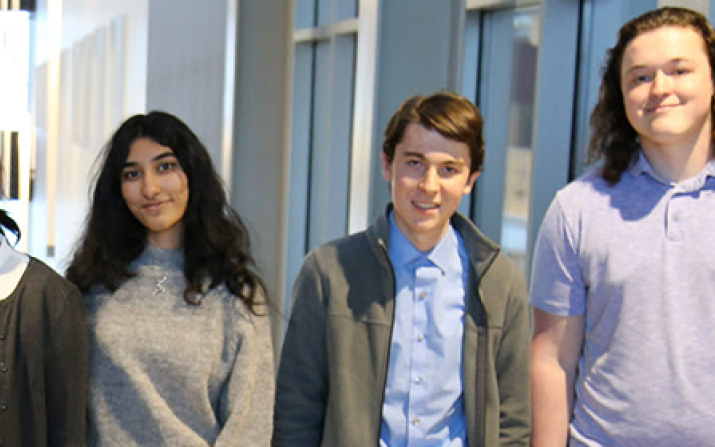Three first-year students receive funding from Nestle Research & Development through innovation challenge

It isn’t everyday first-year students have the opportunity to work with industry professionals to solve real-world problems, but this semester three students are doing just that.
After pitching their ideas to researchers at Nestlé’s Research and Development Unit in Solon, Ohio, earlier this year, two teams were selected for the company’s innovation challenge—a three month discovery project focused on areas like packaging science, cellular nutrition, agricultural science and more—that awarded $10,000 in funding.
“The benefit of this project is multifold,” Abhinendra Singh, assistant professor in the Department of Macromolecular Engineering and faculty mentor for a winning team, said. “The students get support outside of the regular curriculum and it gives them the opportunity to do things that are really happening in the industry right now.”
The project benefits Nestlé, too.
“Our partnership with Case Western Reserve University is part of Nestlé’s commitment to empowering the next generation to thrive and make their impact,” said Jennifer Paine, head of the Nestlé Research and Development Unit in Solon, Ohio. “As a global food and beverage company with a large presence right here in Northeast Ohio, it’s particularly critical to us that we nurture the future of entrepreneurship in our industry.”
Removing Ice Formation
Alessandro D’Amico and Ryan Pappalardo are working closely with Singh to get guidance on their project, which focuses on removing ice formation that develops on frozen, filled pasta, like ravioli.
“We really want to focus on tackling the problem in new and innovative ways by combining Nestlé’s current strategies with Case Western’s innovative abilities,” D’Amico said.
However, landing on this idea wasn’t the easiest feat. Pappalardo explained that they worked through a variety of ideas before landing on filled pasta.
“Honestly, when the judges said no the first few times, it was discouraging,” he said. “I spent hours of time on certain ideas, but I kept going at it! This wasn’t something I got done in one sitting, but when I finally did get it done it felt really rewarding.
Now, the first-year duo is learning as much as they can about Nestlé’s manufacturing process. D’Amico suggests that the more they are able to learn about it, the more helpful and creative they can be.
“This is an opportunity to combine my engineering skills with Nestlé’s business model,” D’Amico said. “Unlike other projects where the business model has to work around the engineering, here the engineering has to work for the business model. It’s a very new experience filled with learning opportunities.”
Upcycling coffee grounds
The second team advanced two ideas to the final round—upcycling food waste and making plant-based cheese taste and melt better.
Because the team only has the bandwidth to support one idea, Sneha Suresh, a first-year engineering student, and Brittany Roopnarine, third-year graduate student in the Department of Macromolecular Engineering, are focusing on upcycling coffee grounds.
Rooparine and Suresh are saving their own coffee grounds to do the testing, where they are trying to determine whether coffee grounds can be repurposed as a thickener and emulsifier in various food and cosmetic products. The two isolated a sugar polymer from the grounds; now the work begins to classify what it is and how it can be modified, said Roopnarine.
As the team continues their research, they will rely on their mentor Svetlana Morozova, assistant professor in the Department of Macromolecular Science and Engineering, and partners at Nestlé for guidance.
“It has been great hearing advice and ideas from industry professionals, as well as researchers here at CWRU,” Suresh remarked.
Morzova already sees the impact on the students.
“This project from Nestlé is a really good opportunity for the students in general,” she said. “I already have this experience, so it’s good for them to build this experience, too.”
